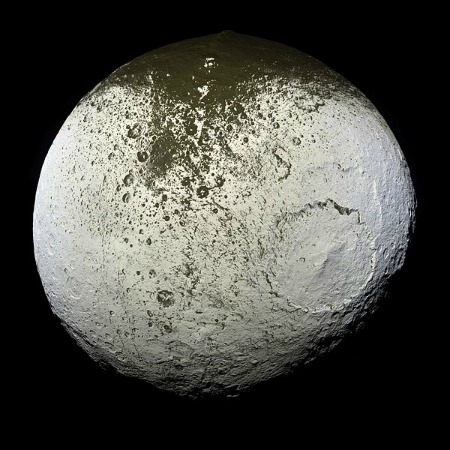Iapetus, ice moon of beautiful Saturn, the two-faced moon. It is gleaming white, bumpy and tradionally cratered in some places, ridged across most of the equator with a Death Star like giant circle on one side, and bruised black and blue, literally misshapen, across an entire hemisphere from what was no doubt an ancient wound of titanic proportions. Iapetus may also have the weirdest avalanches or debris slides, or whatever the term is, in the solar system:
BBC— The icy satellite has more giant landslides than any Solar System body other than Mars. The reason, says Prof William McKinnon, also from Washington University, is Iapetus’ spectacular topography.
“Not only is the moon out-of-round, but the giant impact basins are very deep, and there’s this great mountain ridge that’s 20km (12 miles) high, far higher than Mount Everest,” he explained. “So there’s a lot of topography and it’s just sitting around, and then, from time to time, it gives way.”


What amazes me in these photographs of the outer planets and their attendant satellites is the amount of light available.
I remember the Titan probes spectacular descent…captured here from recovered data…
http://www.nasa.gov/mov/148081main_PIA08117_titan_data.mov
But the amount of light is really surprising out there!
I don’t know if it’s that surprising considering how much light makes it to the planets and back to make them incredibly visible to the naked eye, and how many of the moons are visible even with a basic telescope.
Mountains of ice on a moon named for a mythological Titan, shaking and rumbling.
What a wonderful (alien) world! Cheers.
I remember in the book version of 2001: A Space Odyssey, Dave Bowman finds the monolith on the surface of Iapetus. Apparently, they changed it to the orbit of Jupiter for the movie due to budget constraints. All the subsequent books all have Jupiter as the location of the monolith.